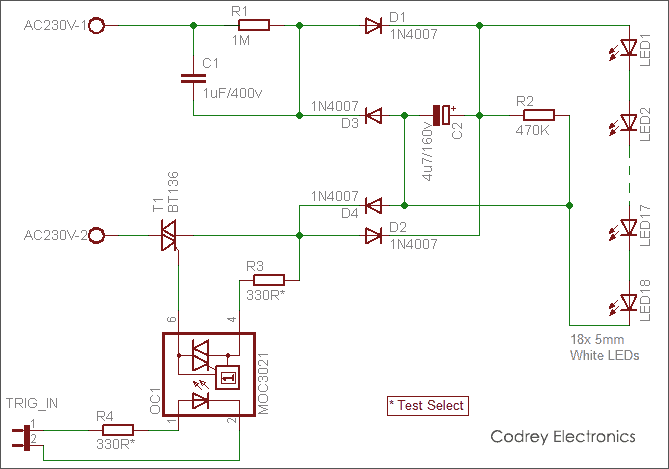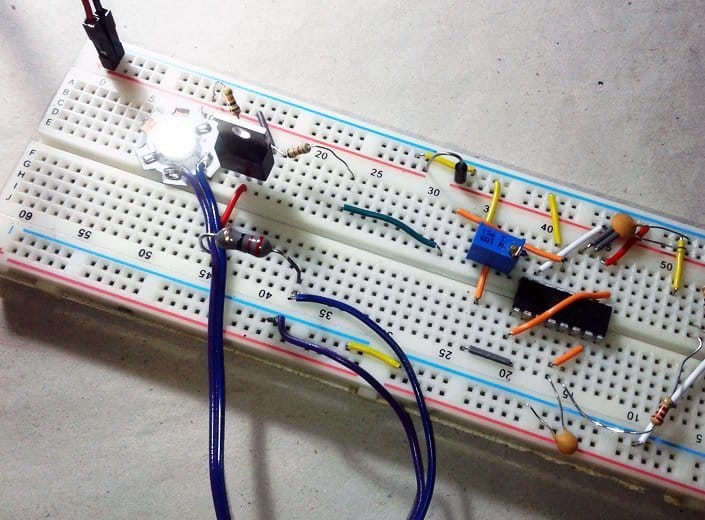Presented here is a simple yet useful AC230V White LED light bulb with an isolated digital interface to control its on/off switching actions through a microcontroller or an external electronic circuitry. The design is based on inexpensive and popular discrete components widely available from almost all electronics component vendors.
Shown below is the prefatory schematic of the white LED bulb based on a bunch of cheap 5mm white LEDs.

As shown in the schematic, a string of 18 white LEDs are used as the light source, and the observed voltage drop across it’s around 54V. In the power supply section, capacitor C1 is the main element with a bleeder resistor R1. Remaining part of the power supply is the traditional full-wave rectifier and filter wired around economic standard 1N4007 diodes (D1-D4) and a high-voltage 4.7uF electrolytic capacitor (C2). The 470K resistor (R2) is again a bleeder resistor (this time, for C2).
The TTL trigger input (high-level from any external circuit) controls the MOC3021 optotriac (OC1). This optotriac is configured to further control a BT136 triac (T1) which in turn switches the white LED string (LED1-LED18). The triac can be chosen according to the current demand of the output load and based on the supply voltage, which in our case is 230V.
For the experiment, the mentioned BT136 triac was selected. Since the triac is connected in series with the rest of the circuit, when the triac allows current flow through it, the LEDs will light up. Enjoy!



